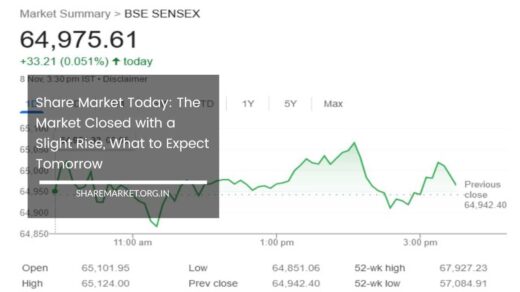Yes Bank Q3 Results: Net Profit Surges by 349.7% to Rs 231.6 Crore

Yes Bank Q3 Results
Yes Bank Q3 2023-24 Financial Report Analysis: Navigating Growth and Challenges in the Evolving Banking Landscape
Yes Bank’s recently unveiled financial report for the third quarter of the fiscal year 2023-24 has sparked significant interest and scrutiny within the financial community.
The bank reported a net profit of Rs 231.6 crore, showcasing a remarkable 349.7% increase from the corresponding quarter of the previous year.
This comprehensive analysis delves into the various facets of Yes Bank’s Q3 performance, providing a deep dive into key financial indicators, market expectations, and the bank’s strategic positioning for future growth.
Financial Performance Overview:
Yes Bank’s net profit surge, while undoubtedly impressive, fell short of market expectations. Analysts had anticipated a profit of around Rs 415.1 crore for the third quarter, underscoring the challenges and opportunities faced by the bank in the current economic landscape.
The quarterly net profit of Rs 231.6 crore, compared to the Rs 51.5 crore reported a year ago, reflects a robust annual growth trajectory, but the variance from market estimates prompts a closer examination of the factors at play.
Equity Provisions and Risk Management:
A notable contributor to the augmented profits is the reduction in equity provisions. In the current quarter, the bank’s management set aside Rs 554.7 crore for provisions, showcasing a significant decrease from the Rs 844.7 crore allocated in the same quarter of the previous year.
This strategic move aligns with the bank’s commitment to sound risk management practices. However, it’s essential to highlight that this provision still exceeded the Rs 500 crore recorded in the September quarter, emphasizing the bank’s proactive stance in managing potential risks.
A deeper analysis of the nature of provisions, including provisioning methodology, coverage ratios, and provisions for specific sectors, can provide insights into Yes Bank’s risk appetite and its assessment of the economic environment.
Understanding the bank’s risk management framework is crucial in evaluating its resilience and ability to navigate uncertainties.
Net Interest Income (NII) and Core Revenue Streams:
The net interest income (NII), considered the backbone of the bank’s revenue, witnessed a modest increase of 2.3% compared to the previous year, reaching Rs 2,016.8 crore.
In the third quarter of the preceding year, the NII stood at Rs 1,970.6 crore. While this growth in NII is positive, it signals a relatively moderate expansion in the bank’s core income.
A thorough analysis of the factors influencing NII, including interest rate spreads, loan portfolio composition, and the impact of monetary policy, is essential for a nuanced understanding of Yes Bank’s revenue dynamics.
Exploring the bank’s strategies to enhance NII, manage interest rate risks, and diversify revenue streams becomes crucial for sustained growth.
The role of digital transformation, innovative product offerings, and strategic collaborations in augmenting core revenue should be explored to gauge the bank’s adaptability to changing market dynamics.
Diversification with Other Income:
Other income played a pivotal role in fortifying net profits, experiencing a surge to Rs 1,254 crore from Rs 1,112 crore in the corresponding period last year.
This diversification of income streams is instrumental in balancing the overall revenue composition of the bank, mitigating reliance on any single source.
A granular analysis of components within other income, such as fee-based services, treasury operations, and non-interest revenue, provides insights into the bank’s ability to adapt to changing market dynamics and capitalize on diverse revenue streams.
Market Response and Investor Confidence:
Despite the commendable financial performance, the market response was somewhat muted, with Yes Bank’s shares closing 0.8% higher at Rs 24.9 on Thursday.
Over the past 12 months, the stock has demonstrated resilience, reflecting a notable 42% increase. This positive momentum underscores investor confidence in the bank’s trajectory, even as it confronts challenges and strives for sustained growth.
Delving deeper into the factors influencing investor sentiment, including market trends, competitor dynamics, and broader economic conditions, provides a comprehensive perspective.
Understanding how Yes Bank communicates its strategy to investors, addresses concerns, and aligns its narrative with market expectations contributes to a more nuanced evaluation of its market positioning.
Asset Quality and Stability:
On the asset quality front, Yes Bank maintained stability, with gross non-performing assets (NPAs) remaining at 2.0%. Net NPAs for the quarter decreased to 0.9%, showcasing an improvement from the 1.0% recorded in the same period last year.
The bank’s steadfast focus on managing asset quality is evident in these metrics, providing a solid foundation for future growth and instilling confidence in stakeholders.
A detailed examination of the bank’s credit risk management practices, loan portfolio composition, and strategies for addressing non-performing assets is imperative for a comprehensive assessment of its asset quality.
Exploring sectoral exposures, the impact of economic cycles on asset quality, and the adequacy of provisioning levels enhances the understanding of Yes Bank’s resilience in the face of potential credit risks.
Comparative Analysis and Industry Trends:
Understanding how Yes Bank’s Q3 performance compares to industry peers and discerning broader trends in the banking sector is integral to a holistic analysis.
Examining factors such as market share, technological advancements, regulatory compliance, and emerging challenges in the banking landscape provides a contextual backdrop for evaluating Yes Bank’s strategic positioning.
A comparative analysis of key financial ratios, efficiency metrics, and growth indicators against industry benchmarks helps gauge Yes Bank’s relative performance.
Identifying industry trends, including shifts in consumer behavior, regulatory developments, and advancements in financial technology, enables a forward-looking assessment of Yes Bank’s ability to adapt and innovate.
Final Remarks and Future Outlook:
In conclusion, Yes Bank’s Q3 results highlight a substantial boost in profits, primarily driven by prudent risk management practices and a decline in equity provisions.
While the net profit may have fallen short of market expectations, the overall financial performance, coupled with stable asset quality, positions the bank on a positive trajectory for the quarters ahead.
The bank’s strategic initiatives and commitment to sound financial practices are essential elements in navigating the evolving economic landscape. Investors and stakeholders will likely keenly observe how Yes Bank continues to build on these foundations in the coming quarters, as it strives for sustained growth and financial resilience.
As Yes Bank charts its course for the future, proactive measures to address market expectations, enhance core revenue streams, and fortify risk management will be pivotal in shaping its narrative in the competitive banking sector.
The interplay of economic indicators, regulatory dynamics, and internal strategies will influence Yes Bank’s ability to adapt, innovate, and emerge as a resilient player in the evolving financial landscape.
A forward-looking analysis that considers macroeconomic trends, regulatory developments, and the bank’s strategic roadmap provides valuable insights into Yes Bank’s future outlook.
As the banking industry undergoes transformational shifts, Yes Bank’s ability to anticipate and respond to emerging challenges and opportunities will play a crucial role in shaping its long-term success.

















